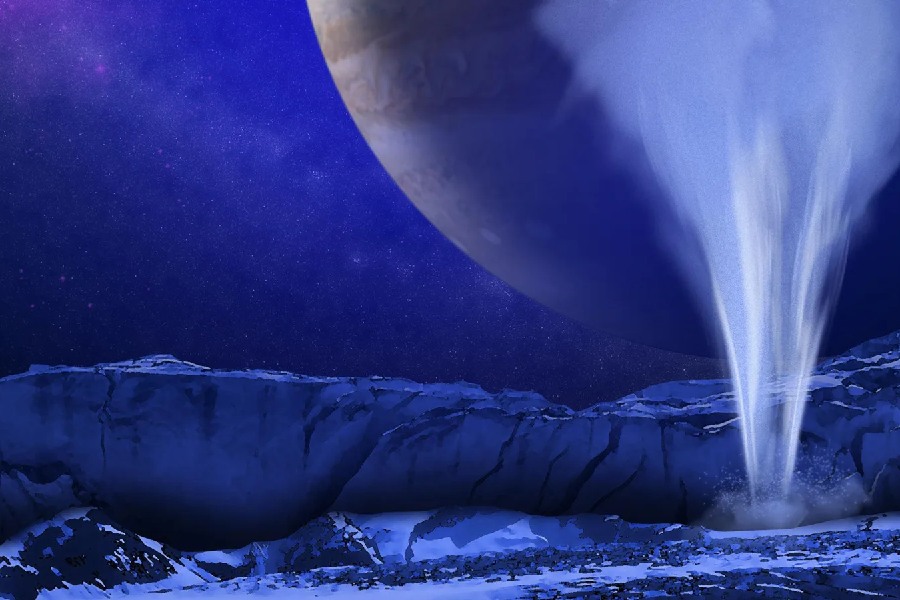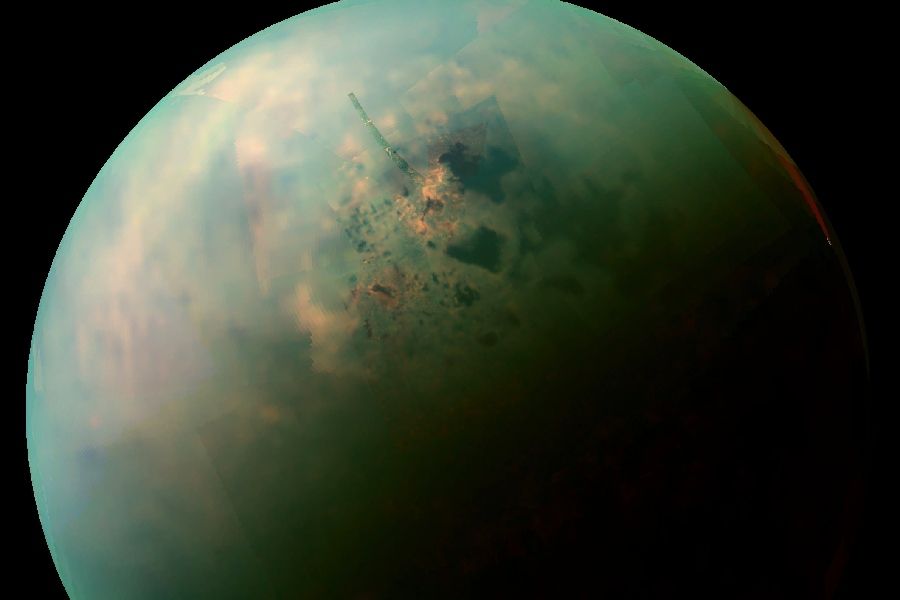When pondering oases in our solar system, the inhospitable environments of giant planets like Saturn may seem an unlikely place to find water supportive of life. Yet recent discoveries have revealed the presence of subsurface oceans within multiple icy Saturnian moons, opening new questions about the habitability of more worlds in our planetary backyard. So what should we know about the moons of Saturn with water?
Some Saturnian moons show evidence of warm water activity on its surface. Additionally, larger Saturnian moons like Titan and Mimas potentially harbor global subsurface oceans beneath their icy crusts. These liquid water environments raise prospects for finding extraterrestrial life within our solar system’s neighborhood.
We will explore the essential environmental mechanisms making liquid water feasible closer to Saturn, counteracting freezing space temperatures. Tidal heating and moderate radiation shielding enable rather unlikely water sources under the frozen exteriors of select Saturn moons.
Join us on a journey to reveal their unexpectedly abundant aquatic traits, reshaping assumptions about frozen moons.

Moons of Saturn With Water
So, which of Saturn’s moons has water? Enceladus and Titan are the two moons of Saturn known to have water. Enceladus possesses an underground ocean beneath its icy shell, with erupting geysers expelling water into space. Titan boasts lakes and rivers of liquid methane and ethane on its surface, alongside water ice.
These discoveries make both moons intriguing subjects for scientific exploration. Their water could hold clues to the existence of life beyond Earth and could potentially serve as valuable resources for future space missions.
Enceladus – Saturn’s ice-covered gem
Discovery and early exploration
Enceladus was discovered in 1789 by the astronomer William Herschel during his observations of Saturn and its moons. It is an icy, reflective moon orbiting within Saturn’s E-ring.
The NASA Voyager missions provided the first closer look in the early 1980s, imaging some surface landforms and terrain. These early views revealed a bright, cratered surface composed largely of water ice. This suggests the possibility of internal heating and geologic activity.
Subsequent missions and discoveries
Later flybys conducted by the Cassini spacecraft found incredibly exciting revelations – that Enceladus has geysers erupting near its south pole region. This area features prominent hot cracks in the surface known as “tiger stripes”.
These geysers blast out towering plumes of water vapor, ice particles, and organic compounds from an underlying global subsurface ocean. This discovery of ongoing hydrothermal activity and hints of habitability made Enceladus a top priority for further exploration.
Evidence of plumes and tiger stripes
Cassini’s instruments provided compelling evidence of gigantic plumes of water vapor and ice particles emanating from the tiger stripes. Large, warm fractures in the polar terrain where heat escapes from below, fueling the geysers.
The composition of the plumes offers a way to sample the interior ocean that lies beneath miles of ice. The presence of this ocean and potential chemical disequilibria make Enceladus an intriguing candidate for extraterrestrial habitation and warrant further scrutiny.
Goddard space flight center research
At NASA Goddard Space Flight Center, scientists study the particles that make up Enceladus’ plumes, utilizing sophisticated models and simulations. Their analyses found evidence of organic molecules and chemical signatures of ongoing hydrothermal processes, ingredients, and energy sources that could support basic microbial life forms. Goddard researchers also produced computer models matching the heat production and complex surface landforms observed. Their pioneering research contributes greatly to evaluating Enceladus’ habitability.

Titan – Saturn’s enigmatic moon
Discovery and initial investigations
Titan was discovered in 1655 by the renowned Dutch astronomer Christiaan Huygens. It is Saturn’s largest moon and the second biggest in the entire Solar System. Early telescopic studies found a thick, opaque orange haze covering Titan’s surface, sparking many questions about the nature of this unusual moon.
The NASA Pioneer missions of the late 1970s provided humanity’s first closer glimpses of Titan’s substantial atmosphere.
The Pioneer 11 probe did a flyby in 1979. It detected a dense nitrogen atmosphere with traces of organic compounds. This further increased interest in this veiled icy world. Next came the Voyager 1 flyby in 1980, which imaged a complex global haze layer enveloping everything.
Exploration and advances
The ambitious Cassini-Huygens mission represented a giant leap forward in unveiling Titan after its arrival in 2004. It revealed a world with lakes, rivers, and dunes composed not of water but of liquid methane and ethane.
Complex prebiotic organic chemistry occurs on Titan, giving rise to tantalizing astrobiology prospects. The upcoming Dragonfly rotorcraft mission will perform detailed in situ studies across Titan and actively search for potential biosignatures under the surface.
Cassini made over 100 targeted flybys of the mammoth moon during its mission, discovering seasonal rainfalls and fluid-carved channels. In 2005, the Huygens lander successfully touched down on the surface, finding an alien landscape shaped by flowing methane fluid and gasses.
Evidence of water vapor plumes
In 2021, astronomers detected tentative yet intriguing signatures of tall plumes of water vapor emanating from Titan’s south pole region, hinting at subsurface reservoirs of liquid water with astrobiological potential.
Further observations are still needed to confirm the provisional evidence gathered thus far for these water vapor plumes. If corroborated, they would aid enormously in studying Titan’s habitability. Scientists used massive ALMA radio telescopes to pick up spectral fingerprints suggesting the water plumes. They rise over 93 miles and may be fed by subsurface seas.
More radar mapping and spectral analyses from powerful next-gen telescopes could substantiate their existence.
Jet propulsion lab research
At NASA’s Jet Propulsion Laboratory (JPL), researchers develop sophisticated atmospheric models. These models recreate Titan’s intricate organic photochemistry and surface processes like methane rainfall and fluid flows.
They closely study Titan’s geological features and active methane cycle dynamics using cutting-edge instruments. JPL experts also continually assess Titan’s overall astrobiological potential. They also design innovative systems like the Dragonfly drone to uncover more of Titan’s fascinations.
JPL has extensively modeled Titan’s meteorology and hydrocarbon lakes. Researchers also published studies indicating possible microbial metabolism pathways using Titan-like chemistry. JPL operates the forthcoming Dragonfly mission set to launch in 2027 and arrive in 2036 for extensive surveys.
Conclusion
As we explore our revelatory voyage through some remarkable moons of Saturn with water, we find frozen worlds that, when glimpsed below their frigid veneers, can unveil liquid secrets full of intrigue.
Our survey of emerging evidence spotlights counterintuitive attributes of aquatic activity. This activity persists within tiny Enceladus and Titan. These moons orbit the inhospitable Saturn.
Tracking the past and present dynamics of subsurface oceans, tidal heating, and potential hydrothermal activity within these alien spheres opens doors to previously unimagined possibilities for life existing nearer to home than ever considered.
We hope this tour stimulates further inspiration to map out traces of water or even habitability signatures in the hidden nooks and crannies of additional far-flung worlds across this solar system and beyond!
